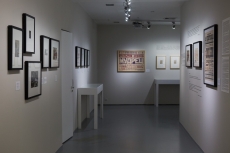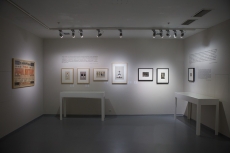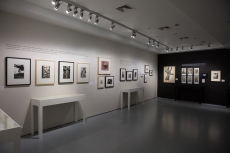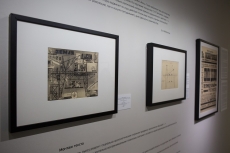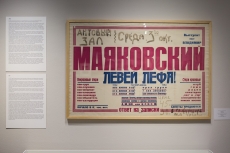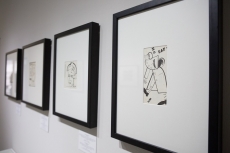Tretyakov.doc

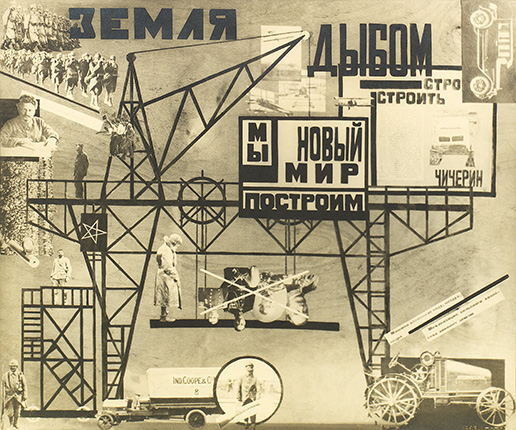

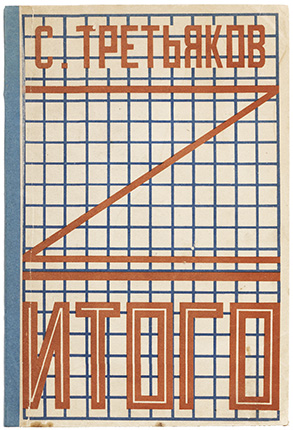
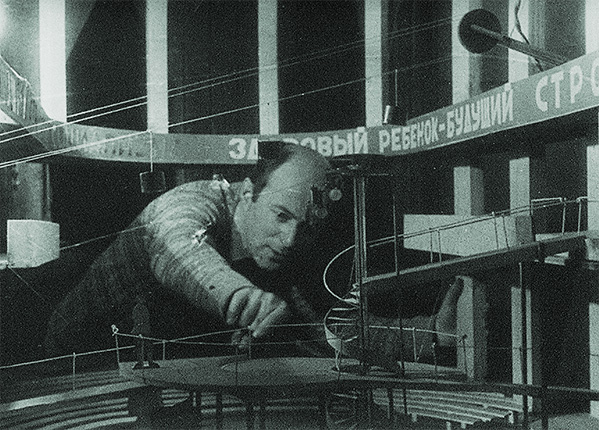
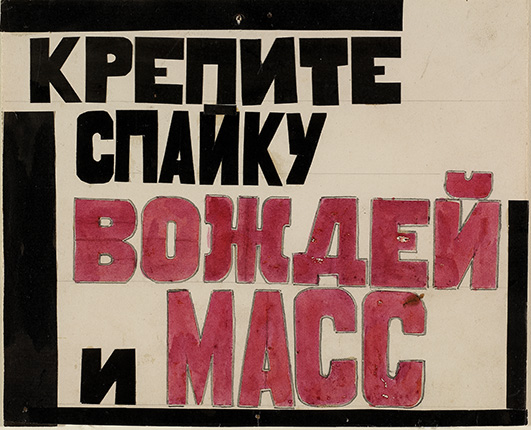
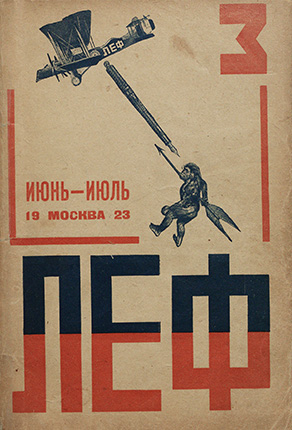
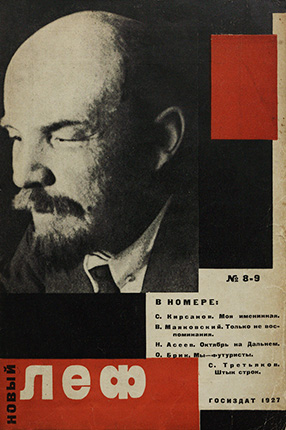

Sergei Tretyakov. 1928. Photo: A. Rodchenko. State Museum of V. V. Mayakovsky
Lyubov Popova. Photograph of design for the staging from ‘Earth in Turmoil’ the V. Meyerhold State Theatre. 1923. RGALI
Sergei Tretyakov. Rechevik. Moscow, Leningrad 1929. Cover by A. Rodchenko. State Museum of V. V. Mayakovsky
Sergei Tretyakov. Itogo. Moscow. 1924. Cover by A. Rodchenko. State Museum of V. V. Mayakovsky
El Lissitzky at work on a set model for the play ‘I Want a Child’ at the V. Meyerhold State Theatre 1929. Photo: Unknown author. State Museum of V. V. Mayakovsky
Lyubov Popova. Political slogan for a production of Sergei Tretyakov’s play ‘Earth in Turmoil’. 1923. State Museum of Contemporary Art (Costakis Collection)
LEF journal. 1923, №3. State Museum of V. V. Mayakovsky
Novy LEF Journal. 1928, №8, 9. Cover by A. Rodchenko. State Museum of V. V. Mayakovsky
KUKRYNIKSY. Cutting from the journal Chudak. Caricature. 1929. State Museum of V. V. Mayakovsky
Moscow, 16.11.2017—17.02.2018
exhibition is over
Share with friends
In collaboration with Anna Zaitseva
For the press
The Multimedia Art Museum, Moscow and State Museum of V.V. Mayakovsky present the exhibition ‘Tretyakov.doc. For the 125th anniversary of Sergei Tretyakov’ to mark the 125th anniversary of the birth of Sergei Mikhailovich Tretyakov (1892–1937). This exhibition will acquaint the public for the first time with the work of one of the most notable figures in Russian cultural life from the 1920s to early 1930s. As a writer, poet, playwright, screenwriter, translator and theorist of literary fact he worked with leading lights of that time such as V. Mayakovsky, V. Meyerhold, S. Eisenstein, A. Rodchenko, B. Brecht and J. Heartfield.
Sergei Mikhailovich Tretyakov was born in Latvia in 1892. In 1913 he moved to Moscow and began his studies at the law faculty of Moscow University. At this period he started collaborating with the ego-futurists and published his work in their poetry collections ‘Crematorium of Sanity’ and ‘Vernissage’, as well as in collected works by Odessa futurists entitled ‘Seventh Veil’, ‘Auto in Clouds’ and ‘Miracle in the Desert’. From 1918 to 1922 he worked in the Far East, actively participating in the Tvorchestvo [Creativity] group together with N. Aseyev, D. Buliuk, N. Chuzhak, P. Neznamov and V. Palmov. Also at this time his first books of verse were published, ‘Iron Pause’ (1919) and ‘Yasnysh’ (1922).
In 1923 Tretyakov returned to Moscow and became enthused by the theatre. V. Meyerhold premiered the play ‘Earth Rampant’, otherwise known as ‘The World Turned Upside Down’ (1923), for which Tretyakov adapted M. Martine’s drama ‘Night’, and S. Eisenstein staged his plays ‘Enough Stupidity in Every Wise Man’ (1923, based on Ostrovsky’s comedy), ‘Can You Hear Me, Moscow?’ (1923) and ‘Gas Masks’ (1924) at the Proletcult Theatre. In his drama Tretyakov used every possible means to exert the greatest agitational effect on the audience: in the play ‘Earth Rampant’ the political slogans of the proletarian revolution were projected on the wall by a cine camera. Initially real motorcycles and machine guns were used as stage props, while infantry units, cavalry, convoys and automobiles joined a production performed in the open air at Sparrow Hills.
In Tretyakov’s completely rewritten staging of ‘Enough Stupidity in Every Wise Man’ by Ostrovsky, the leading roles were taken by acrobats and clowns who parodied contemporary political figures. Eisenstein turned the production into buffoonery, with circus tricks, songs and stunts. The director included several film inserts (projected on the stage backdrop) in the spectacle and also a five-minute film epilogue, later known as ‘Glumov’s Diary’. All this was meant to emphasize the carnival nature of the action, since at that time cinema was closely associated in the public mind with fairground shows and music halls.
Tretyakov was one of the founders of documentary theatre, which was based on actual events and blurred the lines between stage and real life. The idea for the play ‘Gas Masks’ evolved from a newspaper report describing an accident at a gas plant. ‘Facts provided the material,’ wrote Tretyakov. This play was performed in the workshops of the Moscow gas plant against a background of industrial equipment.
Sergei Tretyakov’s play ‘Roar, China!’ (1926), directed by Meyerhold’s pupil V. Fyodorov, became one of the most famous and successful productions in the history of 20th-century Soviet theatre. It was performed in many cities across the Soviet Union and theatres around the world, in England, Austria, Argentina, Norway, the USA, Japan and China.
In 1923 Sergei Tretyakov became closely associated with the group around Mayakovsky, participated in LEF (the Left Front of the Arts), joined the editorial board of the journal LEF, and became a theoretician of industrial art and the literature of fact. In the 1930s the documentary genres flourished. There was a focus on diaries, biographies, sketches and reports where the subject matter was dictated by life itself and there was no call for artistic imagination. At this period the most popular magazines in the country – Our Achievements, Let’s Produce, Change and USSR in Construction – published essays by well-known Russian writers such as M. Gorky, K. Paustovsky, M. Prishvin, E. Gabrilovich, E. Zozuli and S. Tretyakov.
Literary essays were printed in magazines side by side with photo reports. Legendary photographers like A. Rodchenko, B. Ignatovich and G. Petrusov travelled to the industrial construction sites of the first five-year plans and recorded the work of collective farms, the life and leisure of workers. Artists and writers went with the photographers on their trips round the country. In 1928 Komsomolskaya Pravda published a feature entitled ‘Writers to the Collective Farms!’, urging the creative intelligentsia to get better acquainted with socialist construction. For two years Tretyakov participated in the work of a collective farm in the North Caucasus. Photographs taken by Sergei Tretyakov in his trips round the country have survived to this day. Tretyakov’s essays such as ‘The Challenge’, ‘A Thousand and One Workdays’, ‘A Month in the Country’, ‘People on the Rails’ and others were published in book form in the late 1920s to early 1930s.
The ideas of factography, which Tretyakov advocated, influenced Western art. Tretyakov’s ‘art of reportage’ found a response in the work of German poet and dramatist Bertolt Brecht, as well as the philosopher Walter Benjamin, who devoted the essay ‘Author as Producer’ to him. In 1931 Tretyakov made a trip to Germany to read lectures and papers. During this visit he talked with B. Brecht, J. Heartfield, E. Piscator, F. Wolf, H. Eisler, etc. These meetings formed the basis of Tretyakov’s book ‘People of One Fire’. ‘Many of the biographies I have described correspond with my own biography, establishing the uniformity of positions and the similar paths taken by people from different points on our planet but borne by the same social flows. The fascist fire on which the works of these people were thrown created a particularly intense feeling of blood brotherhood…It seemed to me that they have a common quality, although they may be unaware of it, which characterises the art of the first decade after the World War.’
From 1927 to 1931 Tretyakov cooperated with the Georgian State Film Industry. He wrote screenplays for several films that became classics of Georgian cinema: ‘Eliso’ (1928, director N. Shengelaya), ‘Salt for Svanetia’ (1930, director M. Kalatozishvili) and ‘Khabarda!’ (1931, director M. Chiaureli).
For several years Tretyakov worked at the 1st Moscow State Film Factory and participated in the preparation of many films. In 1925 he attended the shooting of S. Eisenstein’s film ‘Battleship Potemkin’ and wrote inter-titles for the film.
The year 2017 is not only the 125th anniversary of Sergei Tretyakov’s birth, but also the 80th anniversary of his death. In 1937 he was arrested as a Japanese spy and shot. His wife Olga Tretyakova was also arrested and convicted twice (in 1937 and 1951). Bertolt Brecht wrote the poem ‘Are the People Infallible?’ when he heard that Tretyakov had died.
In 1956 Tretyakov was rehabilitated. The Military Prosecutor’s Office stated in their conclusion: ‘...The charge was based on S. Tretyakov’s testimony given at the preliminary investigation and in court. These statements were not checked during the investigation...There is no objective evidence of guilt in the case…’
Due to efforts made by Tretyakov’s wife and daughter his name was restored to the cultural and academic sphere. The books ‘Tan Shih-hua. People of One Fire. The Country-Crossroad’ (Moscow, 1962), ‘Hear, Moscow!’ (Moscow, 1966), ‘Country of Crossroads’ (Moscow, 1991) were published, and his plays returned to the stage.
The exhibition ‘Tretyakov.doc’ includes posters, sketches of stage costumes and scenery, photographs of theatre productions and fragments from films, books and magazines to which Sergei Tretyakov contributed. All the exhibits are accompanied by his texts.
More than one hundred exhibits featuring in the exhibition were kindly provided by partners of the project: the Russian State Archive of Literature and Art, the State Central Museum of Contemporary Russian History, the Russian State Archive of Film and Photo Documents (Krasnogorsk), the State Museum of Modern Art in Thessaloniki (Costakis Collection), the National Film Foundation of Russia, the A.A. Bakhrushin State Central Theatre Museum, the Russian State Library, the Vladimir Dahl Russian State Literary Museum and the Bertolt Brecht Archive at the Berlin Academy of Arts.
‘Tretyakov.doc’ launches a festival dedicated to the work of Sergei Tretyakov, to be held in Moscow from 16 November 2017 to 9 February 2018.
From 20 to 22 November an international academic conference will be held at MAMM, with participation from Russian and foreign researchers. The organizers of the conference are the V. Mayakovsky State Museum, the Multimedia Art Museum, Moscow, the Higher School of Economics, the A.M. Gorky Institute of World Literature under the Russian Academy of Sciences, and the International Academy of Zaum.
On 6, 13 and 16 December films will be screened at the MAMM cinema with live musical accompaniment, as part of the ‘Cinema of Sergei Tretyakov’ programme based on Tretyakov’s screenplays: ‘Eliso’ (1928, director N. Shengelaya), ‘Salt for Svanetia’ (1930, director M. Kalatozishvili) and ‘Khabarda!’ (1931, director M. Chiaureli). There will also be lectures here by film historians from the Moscow School of Cinema.
Performances based on S. Tretyakov’s play ‘I Want a Child’ will be held on 8 and 9 February at the V. Meyerhold Centre.
As part of the festival, on 19 November a commemorative plaque dedicated to Sergei Tretyakov will be unveiled by the Last Address project at Malaya Bronnaya 21/13.

